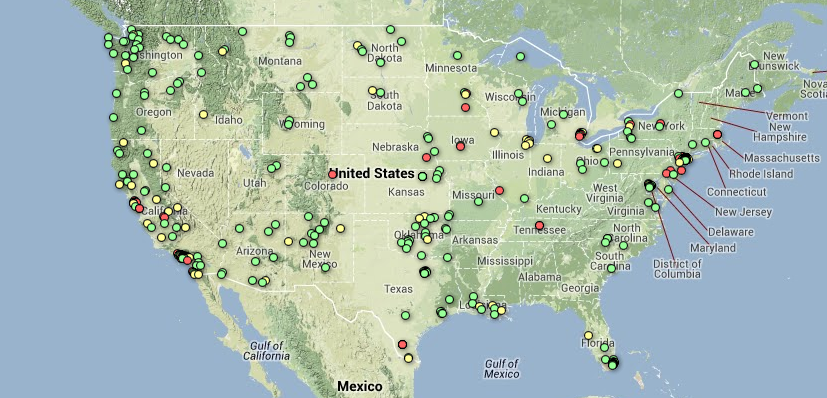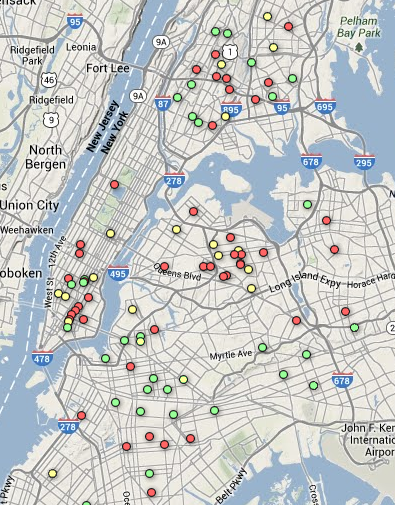In the next five years, we are going to witness this century’s greatest single mutation in the structure of missions. As a result, missions will no longer be viewed as something we simply do overseas, but something we do within groups of unreached peoples, whether those groups are located in Singapore or Los Angeles-Ralph Winter, 1986
Ralph Winter was a visionary. Most remember Winter for his famous address in 1974 at the Congress for World Evangelization in Lausanne during which he advocated for “hidden peoples,” still in desperate need for evangelization. The term “hidden peoples,” eventually bloomed into the common missions lingo today of “unreached people groups.” This new concept of unreached people groups (UPG’s) (see definition here) reshaped the face of Christian mission. But Winter didn’t just ride this one address to notoriety.
Winter’s quote above captures a further outworking of his desire to see the church focus on UPG’s, wherever they are found. In this way Winter was ahead of his time. And in fact, tragically, he still remains far ahead of his time. Winter had recognized in 1986, what many of our missionaries, churches and sending agencies are still struggling to grasp today; namely, that geographical location has become largely irrelevant when it comes to engaging UPG’s.
Indeed a new frontier of missions is emerging or perhaps more to the point, a new frontier of missions has already emerged. This emerged frontier (EF) incorporates the vast throngs of UPG’s who have moved out of their home context and into a location where Christians have easy opportunity to evangelize them. The transnational phenomenon has opened doors that the global church only dreamed of half a century ago.
Now UPG’s dot—or should I say inundate—our large Western cities. However, this frontier has now emerged to such a point that UPG’s are no longer isolated to our bigger cities. For example, my wife’s grandparents live in a small Minneapolis suburb that has seen its population become over 10% Somali in the past couple decades. Somali’s are among the least reached Muslim populations in the world. Somalia is also number two on the World Watch List’s most persecuted countries list. This makes Somalia, the country, virtually inaccessible to missionaries, western or otherwise. However, this does not mean Somali’s are inaccessible. They are incredibly accessible from within the United States. And if the Somali’s here are won to Christ, who better than them to carry the Gospel back to their own people?
The EF is strikingly undocumented. If one were to visit The Joshua Project website and look at a map of America, there are still shockingly few red dots (red dots represent UPG’s) on this wide swath of land.
Yet those who are working in many cities and towns can testify to the strangers in our midst. Perhaps the American city best cataloged for it’s UPG’s is New York City (map shown below).
When one looks at the number of UPG’s in New York City, the potential for the healing message of the Gospel to go to the nations from this city is evident. And while Joshua Project does not capture the full breadth of UPG’s in our midst, rest assured, the potentiality is there. We just need churches who are willing to find out who is among them and make plans to deliberately engage them.
And that is who this article for. It is for churches all across Christian lands who can deliberately engage this new EF. I cannot underscore the global impact that a church might have if they deliberately attempt to engage the UPG’s living among them. So what does a church need to do in order to take practical steps to do this?
1. Discarding our outreach blinders for our own ethnicity. When it comes to reaching our community this often—subtly and unknowingly—translates to reaching those who are like us. Reaching those with the same skin color, similar background, similar cultural heritage, etc. If our churches are going to impact the nations living among us, we have to stop strictly focusing on those similar to us. The church as a whole needs to buy into deliberately trying to connect with those of a different ethnic background.
2. Discarding our old overseas paradigms. To be sure, I am not saying that there is not a place for overseas workers. They still play a vital role in world evangelization. But it is no less vital than full time workers working in the Diaspora or in our situation, lay Christians attending ordinary churches who are deliberately reaching their Diaspora communities. Our churches have become imbibed in a one-track missions model of sending overseas. Most of our churches strictly see themselves as financial backers and prayers when it comes to UPG’s. We need churches who change their mindset to be financial backers, prayers AND doers of the work.
3. Figure out who is there. If a church decides to pursue this avenue, one of the first things to do is figure out who is in your community. Who are they? Where do they come from? What do they believe? Where do they live? Where do they hangout? With no catalog of UPG’s in your city, this will take people committed to going out and asking questions. People will need to go to new places in town to find the people’s living in your area.
4. Focus your efforts. If you do not deliberately aim to reach a certain UPG, or a handful of UPG’s who share similar cultural affinities, you will likely miss the mark. Those in the church reaching out need to be trained to reject other opportunities among reached people in order to concentrate their efforts and time on the people they are targeting. This may seem narrow to some. But if you don’t have a laser focus for your UPG, your chances of reaching them become greatly diminished.
5. Create new structures where UPG’s can flourish before and after they come to Christ. One way for this project to fail before it gets off the ground is to assume that you will be able to bring these UPG’s into a big church building. While this may happen with a few, it will severely impact your ability to reach the UPG’s in your community. Most people from these other parts of the world are disillusioned by what they envision as big institutional Chrsitanity. Consider starting small cell churches out of your big church with three or four families who are committed to reaching your UPG groups. These families can still be under the eldership of the big church but they need to operate independently as they create an environment that is more contextually appropriate. As people are won to Christ these cell groups should have a way to emerge into fully functional house churches.
6. Create an outreach plan. The church should spend time learning about the people being targeted and how to effectively share the Gospel with them. What can you do to get the Gospel out to your people? A Jesus Film mailing? Going to their restaurants and sharing the Gospel with them? Shopping in their supermarkets? Setting up play dates with families from your community? Set up a strategy about how to get the Gospel out to your people.
If our churches follow this six step plan, our ability to reach the unreached will drastically increase. It is high time that we begin focusing our efforts on the least reached among us as they may be the key to unlocking many of the world’s unreached peoples.
Times have changed. The game is different. The old missions paradigms aren’t enough.
Our churches need to heed the advice of Ralph Winter. We need to engage the Emerged Frontier.







2 Comments
Leave your reply.